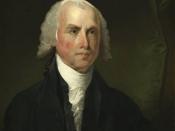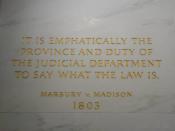In 1789, Article III of the United States Constitution established the Supreme Court to serve as the pre-eminent court within the federal judiciary. That same year, the first Congress of the United States of America enacted the Federal Judiciary Act of 1789 which structured the federal system of courts under the provisions of Article III and concurrently specified the jurisdictions of the various federal courts. Historically, the established procedures found within both documents have allowed the Supreme Court to adjudicate their decisions based upon reason and law. This fundamental basis for decision making has attributed to the Court's capacity to instill long withstanding procedures into the parameters of law and governance. Specifically, judicial opinions have generated revisions in the institutional functions of the Executive, Legislative, and Judicial branches. The prevailing affects of the decision making process confirms the unequivocal importance of the Supreme Courts' opinions. Marbury v. Madison (1803) exemplifies this importance because Chief Justice John Marshall's reason of law infused judicial review into the judiciary, thus giving it the ability to uphold or reject the constitutionality of a legislative or executive order, and firmly establishing the judiciary as a coequal branch of the government.
The dramatic case of Marbury v. Madison (1803) came in the wake of the 1800 presidential election. This election cost the Federalist party both the presidency and control of Congress. Despite losing the election, constitutional mandates required the Federalist Party incumbents to sustain their position in office until March 1801. This enabled the lame-duck incumbents to enact Federalist favoring legislation that would allow them to remain dominant within the judiciary. First, Congress passed the Circuit Court Act of 1801. This act created six new circuit courts and a number of district courts that were created to accommodate the new states of Kentucky, Tennessee, and Vermont...


